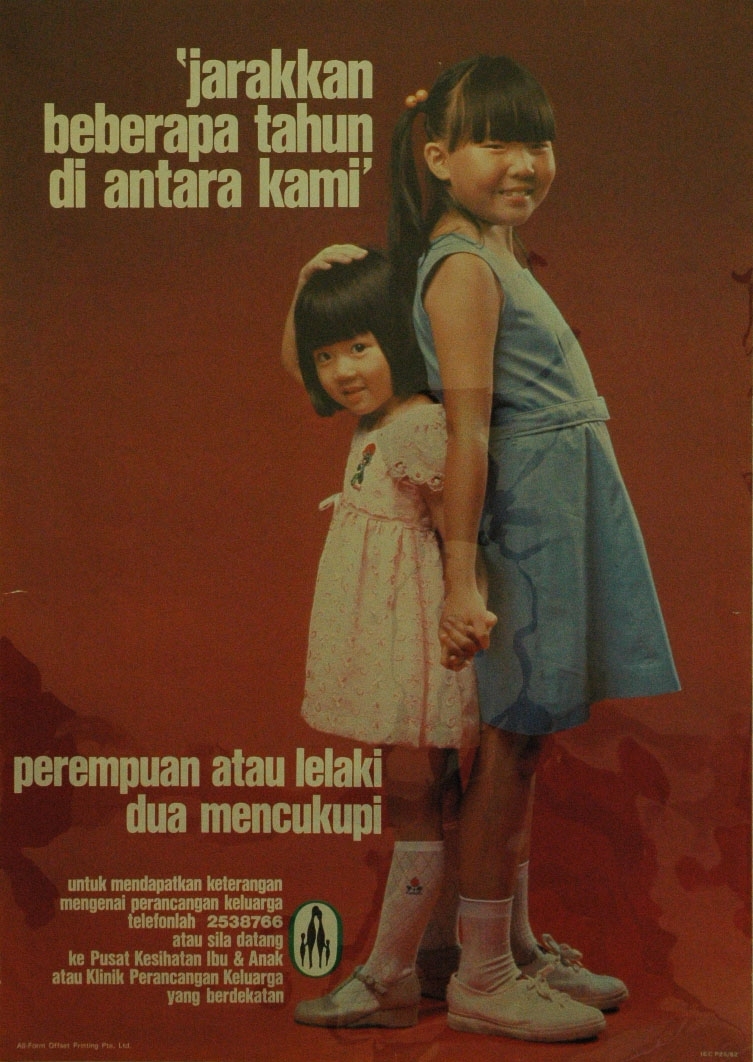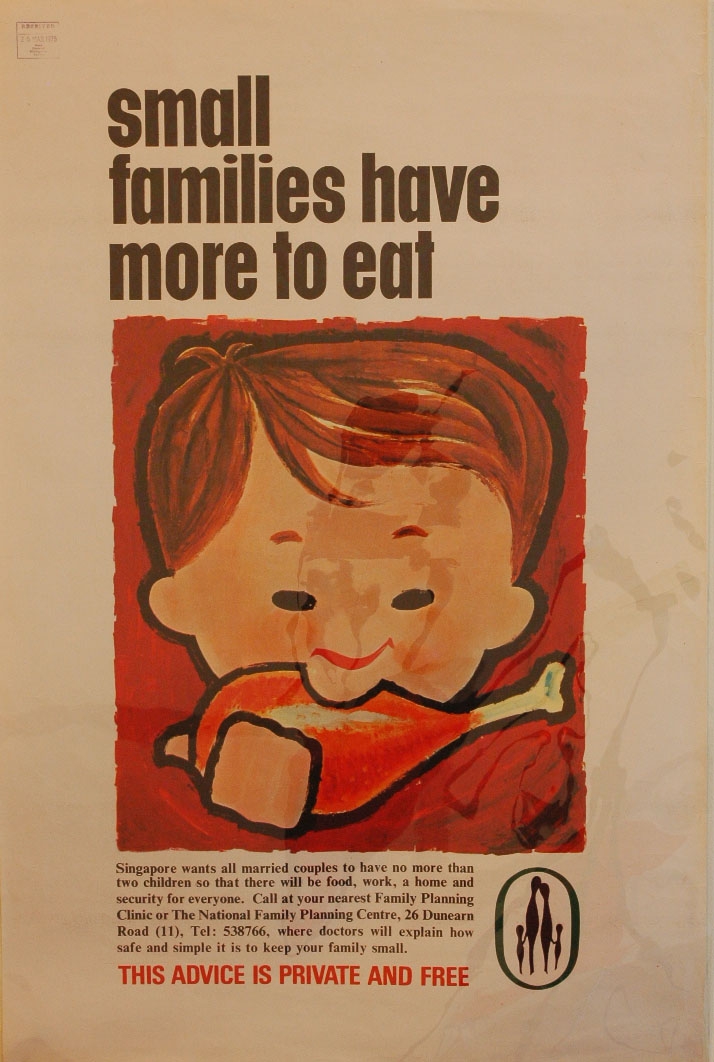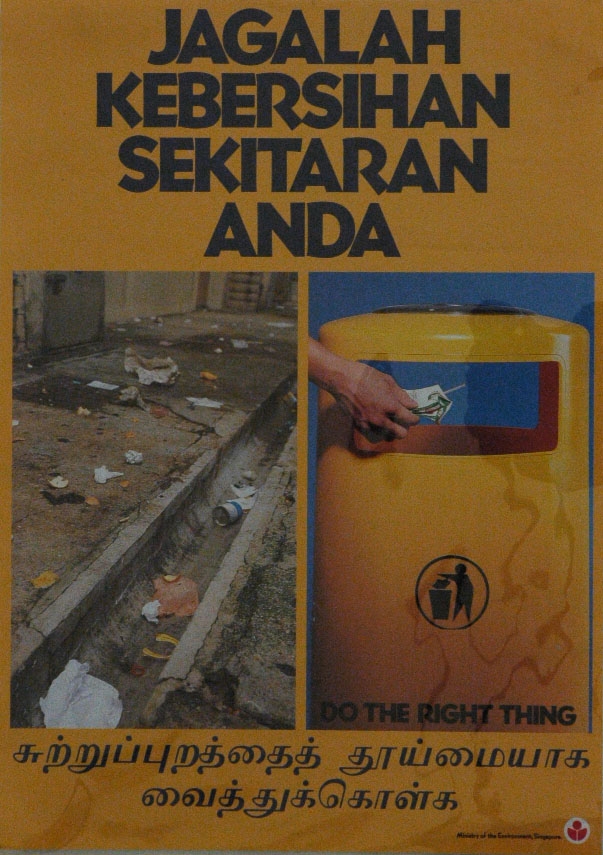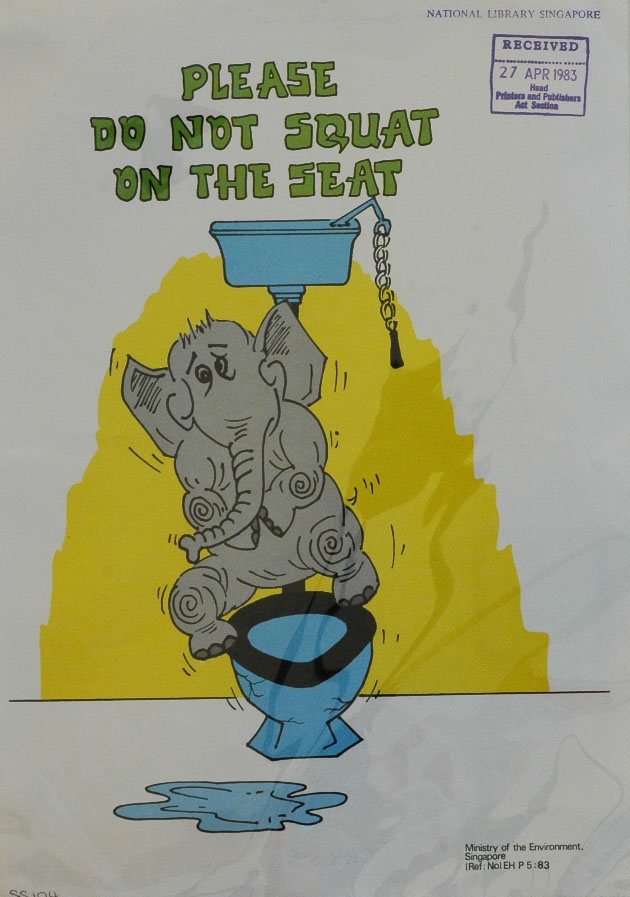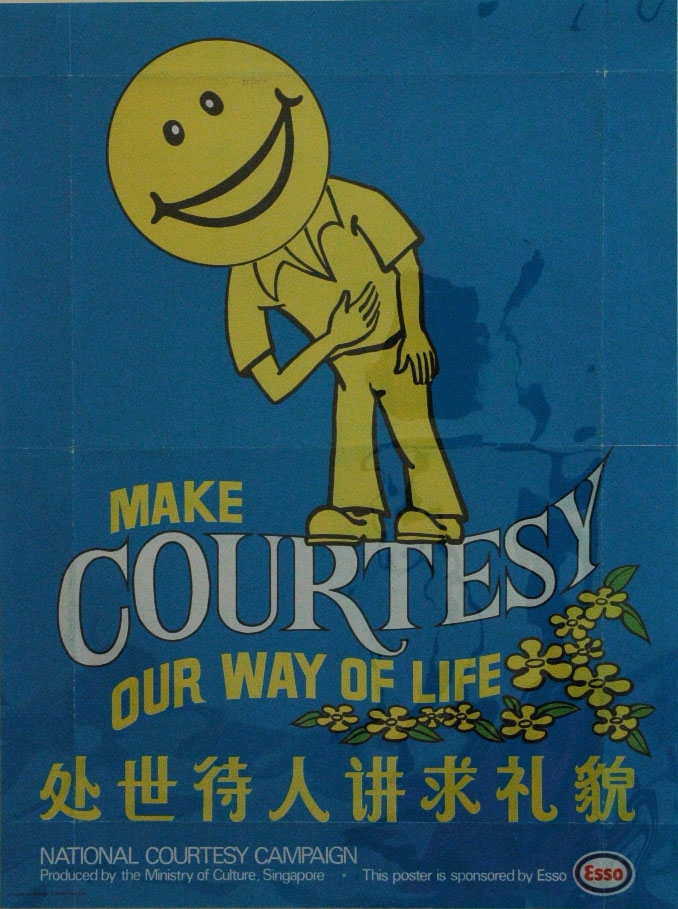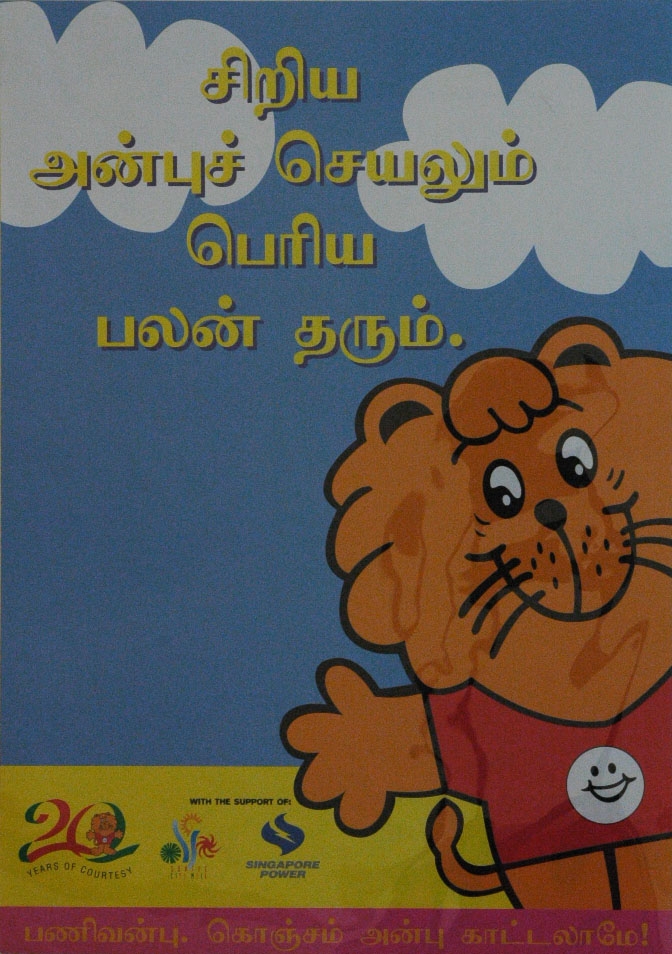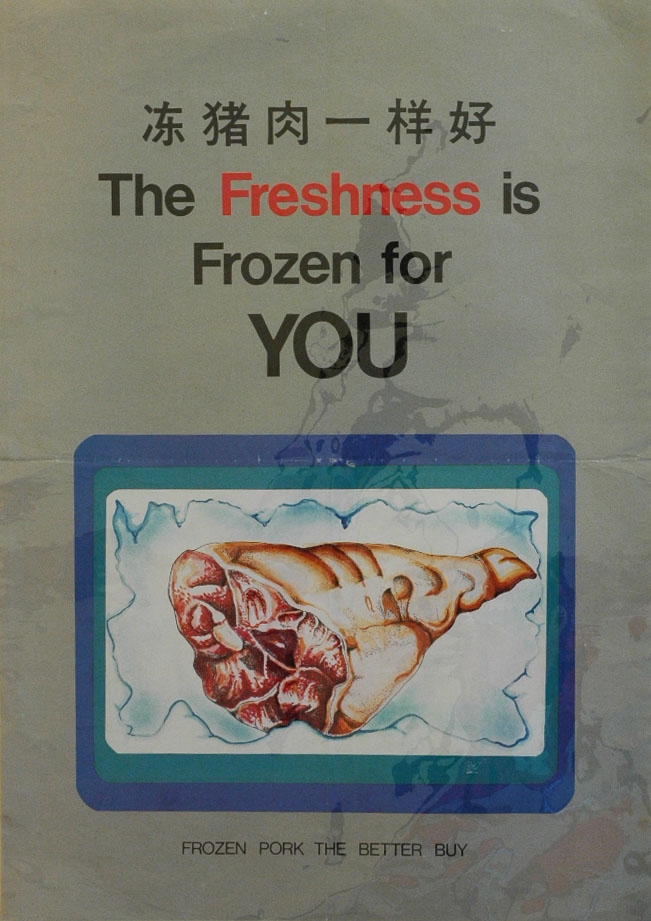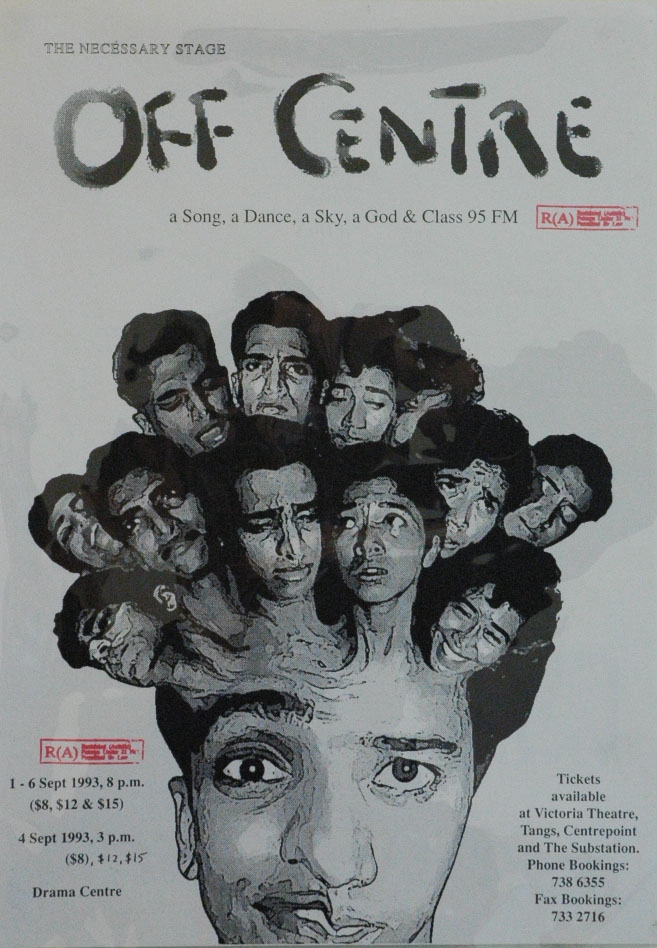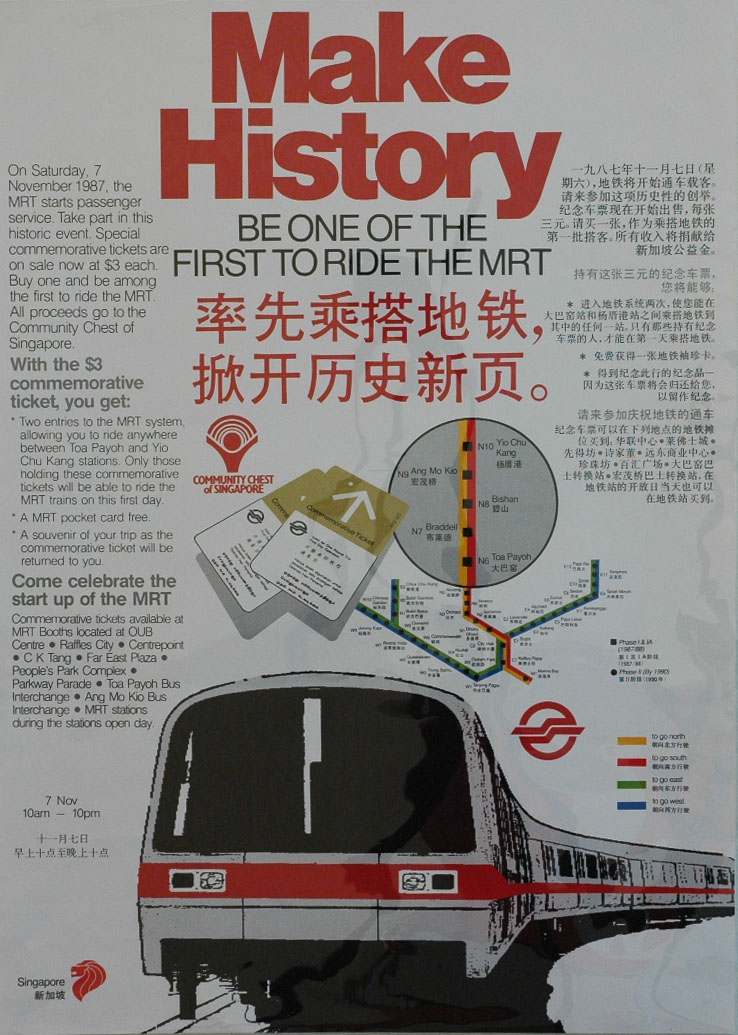Creating the Right Environment: Poster Collection at the Lee Kong Chian Reference Library
Comprising more than 4,000 posters from the 1960s, the poster collection covers a broad spectrum of topics relating to Singapore.
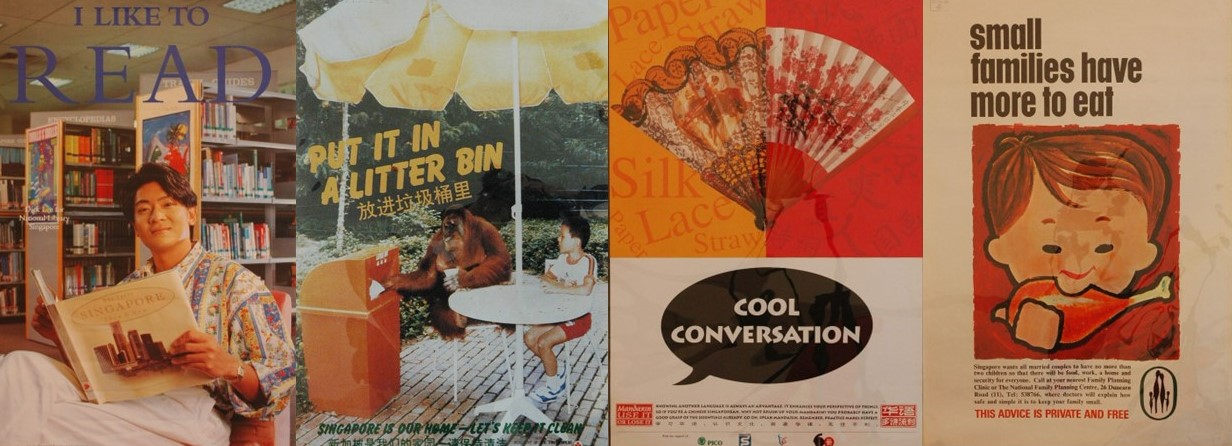
The Library’s poster collection comprises largely of national campaign posters. There are also many event and programme-related posters. These posters are in one or more of the four official languages.
National Campaign Posters
Between 1958 and 1995, there were reportedly over 200 national campaigns organised. Campaigns are defined by Bastion as a ‘unique tool used by the government, a sort of public education programme, to enlighten the public about some government procedure. policy or practice, to raise awareness and consciousness about the need far a change of values, or to implement a particular behaviour.’ (Bastion, A., 2007, p. 69). Thus, as socialisation tools, campaigns and their related paraphernalia lend themselves to interesting studies an the socio-cultural and political landscape of Singapore. A critical analysis of posters also provides insights to changes in public attitudes towards campaigns over the years. Public awareness programmes have evolved, through time, from directness to subtlety, didactism to persuasion, campaigns to movements. This Is perhaps indicative of the growing sophistication of its audience and measures to counter campaign fatigue.
The 1960s: Creating the Right Environment for Survival
One of the most successful campaigns implemented during the 1960s–70s was the “Stop at Two” population policy. After World War II, Singapore faced severe shortages in food, housing and education. Hence voluntary family planning was introduced by the Family Planning Association of Singapore to ensure sustainable population growth. Anti-natalist policies continued right up to the 1960s when Singapore separated from Malaysia. Lacking in natural resources and cut off from it economic hinterland, the government advocated family planning to check against overpopulation and overstraining of resources.To this end, the Singapore Family Planning and Population Board was established in June 1966. The Board employed the use of publicity awareness programmes, and a combination of incentives and disincentives to discourage the formation of large families The incentives and disincentives affected the areas of housing allocation, priority in primary school admission exercises, tax reliefs, staggered fees for government maternity hospitals, and unrecorded paid leave for voluntary sterilisation.
The Board conducted successive public awareness programmes, which stressed the importance of family planning. Early campaign messages highlighted the need for family planning. This later shifted to the merits of having small families. In around 1972, campaign messages became more specific focusing first on the two-child family, followed by the two-child family regardless of the sex of the children. These changes documented in posters such as: Small Families Have More to Eat; Small Families Have More to spend; Small Families Own More; Small Families Can Live Better; Small Families Enjoy Better Health; Happiness is a 2-child family; Enjoy Your Children, Help Them Grow; Girl or Boy, Two is Enough.
So effective was the campaign in curbing population growth, subsequent campaigns had to be organised to address the problem of negative growth. By the 1980s, decline in population growth necessitated a change in policy. In 1987, inclusive pronatalist policies were implemented to encourage Singaporeans to have more children. The slogan “Have Three or More, If You Can Afford it” became a common catchphrase. Posters like Children: Life Would be Empty Without Them promoted the benefits of having children. Recent public awareness programmes have attempted to be less patent in its procreation drive. The appeal for more children is broached through subtler media messages that promote romance, love for children and family life.
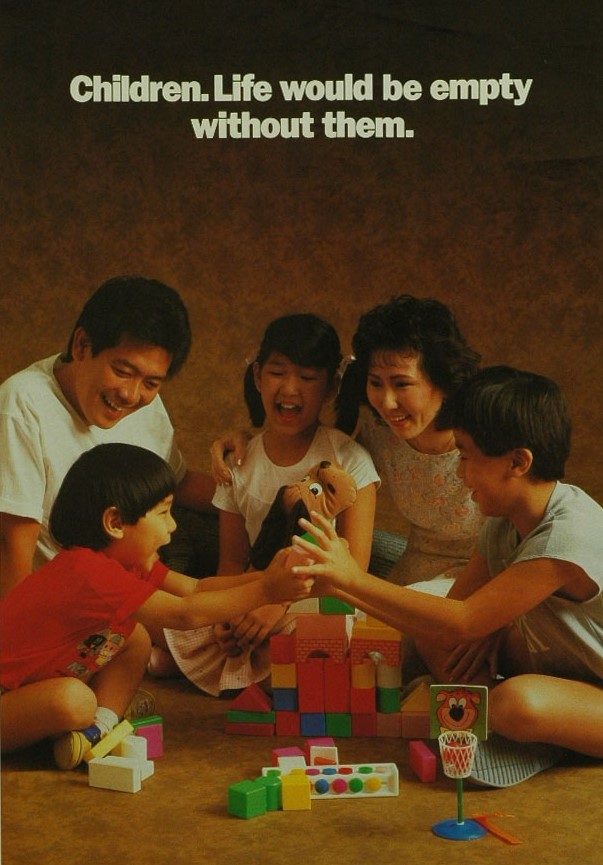
The 1970s: Creating a Pleasant Physical Environment
With the campaign aiming to achieve sustainable population growth in place, the government turned its attention to improving the living conditions of its citizens during the 1970s. Launched on 1 October 1968 by former Prime Minister Lee Kuan Yew, the Keep Singapore Clean campaign was one of the nation’s longest running public awareness programmes. At that time, littering was rampant and dogged drains as well as flies were common sights. Also, the Leland was still relying largely on the open refuse and night soil collection system. Even as the government set about to improve the sewage and waste disposal infrastructure, the month-long campaign sought to address the littering habits of Singaporeans by inculcating in them a sense of responsibility for the cleanliness of shared spaces. The aim of the campaign was to make Singapore the cleanest and greenest city in Asia - a place where Singaporeans would be proud to all home, and where foreign investors would be attracted to come. The campaign was held annually until it merged with the Garden City Campaign to form the Clean and Green Week in 1990. Clean and Green Week took environment care and protection to the next level by encouraging Singaporeans to reuse, recycle, and reduce waste.
The Library’s poster collection provides a record to some of the publicity materials in environmental campaigns and other public health issues managed by the Ministries of Environment and Health. The variety is wide, ranging from noise pollution (Please Don’t Shatter Our Peace and Quiet: Let’s All Share the Joys of a Little Less Noise), bagging of refuse (Dispose Your Refuse the Correct Way), spitting (Stop that Spitting Habit), mosquito breeding (This Mosquito Breeding In Your Home Can Infect You with Deadly Dengue Hemorrhagic Fever), water conservation (Let’s Not Waste Precious Water), reusing resources (Go Green with Used Textbooks), to dirty and smelly toilets (Please Do Not Squat on the Seat). The Severe Acute Respiratory Syndrome (SARS) outbreak in 2003 brought renewed attention to the importance of personal hygiene (Let’s Fight SARS Together).
In trying to get Singaporeans to change their behavior, media messages have appealed to Singaporean’s sense of ownership (Singapore is Our Home: let’s Keep it Clean), common sense (Bag Your Refuse, Please: It’s So Simple and It Makes Sense, Doesn’y)?), and face (When You Litter, People Look at You Differently).
1980: Creating a Pleasant and Cohesive Social Environment: Social Etiquette and Language Policies
After improving the external physical environment in the 1970s, campaigns in the 1980s looked inwards - towards the cultivation of refined and cohesive society. The Courtesy and Speak Mandarin campaigns were two such initiatives.
With its catchy jingles and cute mascot, the Courtesy Campaign is probably one of the campaigns most etched in the muds of those growing up in the 1980–90s. Unbeknown to many, the campaign had its origins from an earlier courtesy campaign started by the Singapore Tourist Promotion Board. The pubic awareness programme, which aged Singaporeans to be polite to tourists, caught the attention and amusement of then Prime Minister Lee Kuan Yew. In his speech at the launch of the National Courtesy Campaign on 1 June 1979, he said, “Last year the Tourist Promotion Board launched a courtesy campaign to make Singaporeans more polite to tourists. I followed the campaign with interest and amusement: interest because most people were responsive to the campaign; amusement because no one protested that it was absurd to teach Singaporeans to be polite only to tourists….Courtesy is part of all cultivated societies. It is a desirable attribute in itself. To be courteous to free spending tourists and to be rude to fellow Singaporeans is to demean ourselves. Then we become a despicable people, moved only by the thought of profit.” Courtesy was not only the mark of a cultivated society, it also serves as the social lubricant that eases the friction that arises from dense urban living.
In promoting any campaign, logos, slogans and mascots are important visual symbols that cue the public on accepted behaviour. The Courtesy Campaign logos and mascots are no exceptions. In the early posters, the courtesy logo adopted was a yellow srniley smile that appears with the slogan “Make Courtesy Our Way of Life”. The smiley face was replaced by Singa, the Courtesy Lion in 1982. The Courtesy Campaign generally aimed to imbibe neighbourliness amongst Singaporeans, and members of the public were encouraged to smile (Smile, Have a Pleasant Day) and to perform acts of kindness for each other (A Little Thought Means So Much). Sometimes a specific theme is chosen for the year, such as punctuallity (Lets Be More Considerate, Be Punctual) or handphone etiquette (Let’s Use Handphones With Courtesy). In 2001, the National Courtesy Campaign came under the auspices of the Singapore Kindness Movement.
Speak Mandarin Campaign articulated Singapore’s language policy in the 1980s. Launched in 1979, the Speak Mandarin Campaign was established to promote Mandarin as the lingua franca amongst Singaporean Chinese. It aimed firstly to improve communication and social cohesion among the various dialect groups, and secondly to create a Mandarin-speaking environment to support the country’s bilingual education policy. Hence, early publicity blitzes emphasised the use of Mandarin over dialect. This policy is illustrated in posters like More Mandarin. Less Dialect Make it a Way of Life, Start with Mandarin Not Dialect and Speak More Mandarin and Less Dialects. The economic reasons for using Mandarin only grew in significance during the mid-1980s with the rise of China as an economic powerhouse. In 1991, the campaign entered a new phase when it began promoting Mandarin to the English-educated Singaporean Chinese. Research showed that Mandarin was fast losing ground amongst the English-educated Chinese. To counter this trend, Mandarin was marketed as a “cool” or hip language to the English-educated. Far from being an unfashionable or “cheena” language, Mandarin opens the door for the Singaporean Chinese to understand his culture and heritage, and equips him to do business with China. This approach is exemplified in posters like Cool Conversation; Mandarin: Use It or Lose It, Nothing helps You Understand Chinese Culture the Way Mandarin Does, Speak Mandarin: It Helps; Mandarin for Chinese Singaporeans, More than a Language; Mandarin Helps Chinese Singaporeans in All Facets of Life; Family, Business and Social.
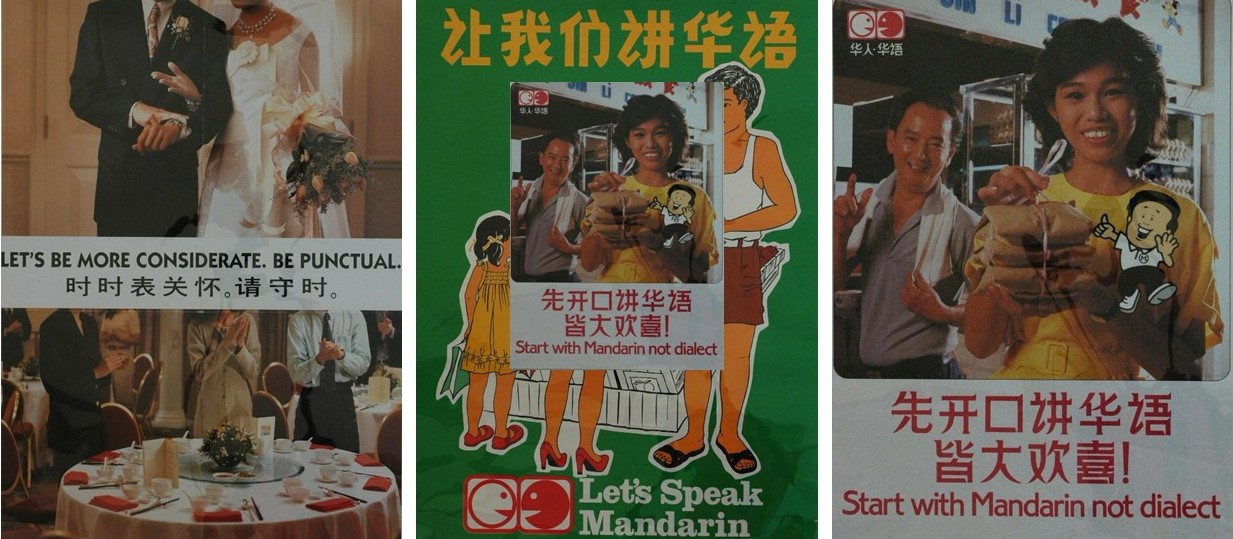
(Centre) Let's Speak Mandarin. Courtesy of Promote Mandarin Council
(Right) Start with Mandarin not Dialect. Courtesy of Promote Mandarin Council
Other Types of Posters
Besides the well-known campaign posters described above, the Library also carries posters on crime prevention, drugs prevention, anti-smoking, road safety, fire safety, work safety, AIDS prevention, dental care, mental health, healthy lifestyles, blood donation, breastfeeding, the disabled, the elderly, productivity, population census, total defence, tourism, cashless transactions, savings and personal finance, and even frozen pork! In 1985, the Primary Production Department began phasing out pig farms in Punggol. Posters were produced to promote the consumption of frozen pork as an alternative.
The cultural and performing arts posters in the Library’s collection also shed interesting light on the literary and artistic life of Singapore. Quite a number of these posters pertain to reading and literacy. The oldest, dating back to 1969, features the first “Festival of Books” organised by the National Book Development Council. Other literacy posters relate to the National Reading Month, book launches and library promotions and programmes. The collection also contains a selection of posters by local theatre groups like TheatreWorks, The Necessary Stage, and the Third Stage, a nom defunct theatre group charged with Marxist conspiracy in 1987. The posters advertised plays like Robert Yeo’s The Eye of History and Hanish Sharma’s Off Centre. Closely related to the theatre posters are posters on playwriting and short-story writing competitions. The collection includes a poster on the first National Short Story Competition organised by the Ministry of Culture in 1982. Also documented through posters are the various festivals held in Singapore such as art festivals, film festivals, food festivals, and cultural festivals like the annual Chingay Parade and the River Hongbao event. Posters were also used to publicise commemorative events like the launch of new stamps, currency notes or the opening of MRT stations. Aside from campaign and event posters, the Library also carries a very small selection of election posters by the People’s Action Party, United People’s Front, and the Pertubohan Kebangsaan Melayu Singapura (Singapore Malay National Organisation). Together, these printed heritage enhance our appreciation of Singapore’s social, cultural and pictorial history.
Accessing the Collection
The poster collection is a closed access collection and is available for consultation upon request at the Information Counter located at Level 11. Library patrons may search the poster collection through the Library’s online catalogue at https://www.nlb.gov.sg/main/home using keywords such as title, author or subject.
Care of Collection
The Library attaches importance to the careful handling and proper maintenance of our poster collection. Besides managing access to the collection through the application process, each poster is digitised and then sealed in mylar to minimise damage from handling.
Other Sources of Posters
In 1999, the National Library Board and then Ministry of Information and the Arts jointly produced a CD-ROM titled MITA Campaigns: 1979–1999. This CD-ROM, which is available in the Library’s collection, features documents, songs, video clips and poster images from the Speak Mandarin, Courtesy and Nation-Building campaigns Besides the National Library Board, sources of posters may also be found in other government departments. The National Archives of Singapore (https://www.nas.gov.sg/archivesonline/) allows users to view and order prints from its web catalogue. Agencies like the Health Promotion Board, National Environment Agency and the National Council Against Drug Abuse avail soft copies of their posters for download from their websites.
How You Can Contribute
The poster collection at the Lee Kong Chian Reference Library is built largely through the act of legal deposit, gifts and donations. Though the collection currently stands at a modest 4,000 item, we continually seek to acquire and preserve historical and cultural documents of value to future generations of Singaporeans. As such, we welcome donations and gifts of Singapore posters of all kinds. These include campaign posters, event posters, movie posters, concert posters, play posters, dance posters, political posters and others. If you or your organisation would like to deposit your posters with us, please email Reference@NLB: ref@nlb.gov.sg.
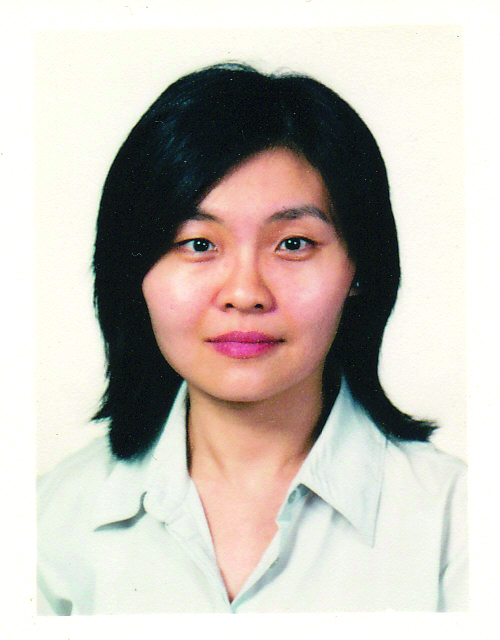
Reference Librarian
Lee Kong Chian Reference Library
National Library
REFERENCES
Arlene Bastion, “National Campaigns,” in Singapore in a Nutshell (Singapore: Pearson/Prentice Hall, 2007), 69–70. (Call no. RSING 959.57 BAS-[HIS])
H. Pan, H. (2005). “National Campaigns - A Way of Life,” in Legacy of Singapore: 40th Anniversary Commemorative 1965–2005 (Singapore: CR Media, 2005), 103–8. (Call no. RSING q959.57 LEG-[HIS])
Lee Kuan Yew, “The Launching of the National Courtesy Campaign,” speech, Singapore Conference Hall, 1 June 1979, transcript, Ministry of Culture. (From National Archives of Singapore document no. lky19790601)
Michelle M. Lazar, “Semiosis, Social Change and Governance: A Critical Semiotic Analysis of a National Campaign,” Social Semiotics 13, no. 2 (2003): 201–21.
Ministry of Environment, Singapore, Towards a Clean and Healthy Environment (Singapore: Ministry of the Environment, 1973). (Call no. RSING 614.7 SIN)
Peter Teo, “‘Clean and Green – That’s the Way We Like It’: A Critical Study of Singapore’s Environmental Campaigns,” accessed 2 May 2007, https://www.lancaster.ac.uk/.
Peter Teo, “Mandarinising Singapore: A Critical Analysis of Slogans in Singapore’s ‘Speak Mandarin Campaign’,” accessed 2 May 2007, https://www.lancaster.ac.uk/.
Saw Swee-Hock, “Population Control,” in The Population of Singapore (Singapore: Institute of Southeast Asian Studies, 1999), 134–60. (Call no. RSING 304.6095957 SAW)
“Singapore Kindness Movement,” Singapore Kindness Movement Council, accessed 2 May 2007, https://www.kindness.sg/.
“Speak Mandarin Campaign,” Promote Mandarin Council, accessed 2 May 2007, http://www.mandarin.org.sg.
“Welcome to Campaign Country,” Straits Times, 25 May 2003, 27.29. (From NewspaperSG)
Whither Poster-ity?” Straits Times, 4 August 1991, 1–3. (From NewspaperSG)


